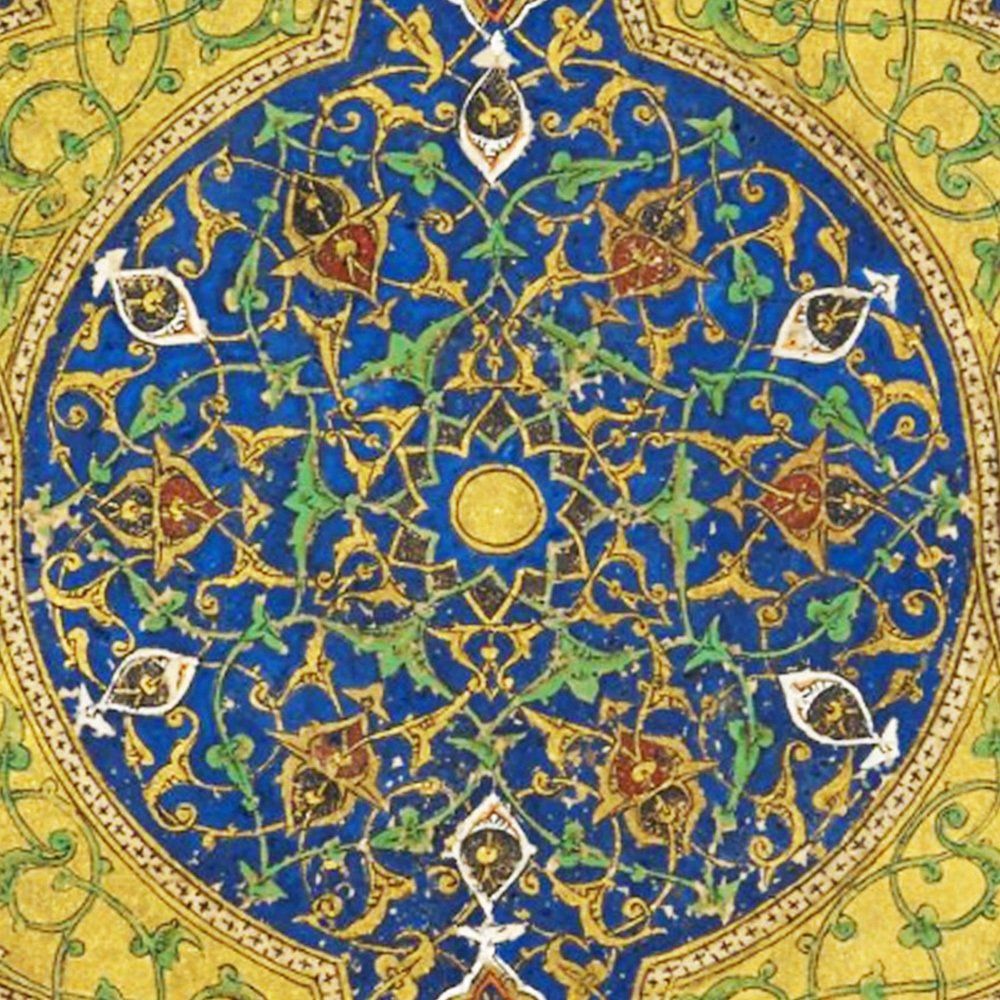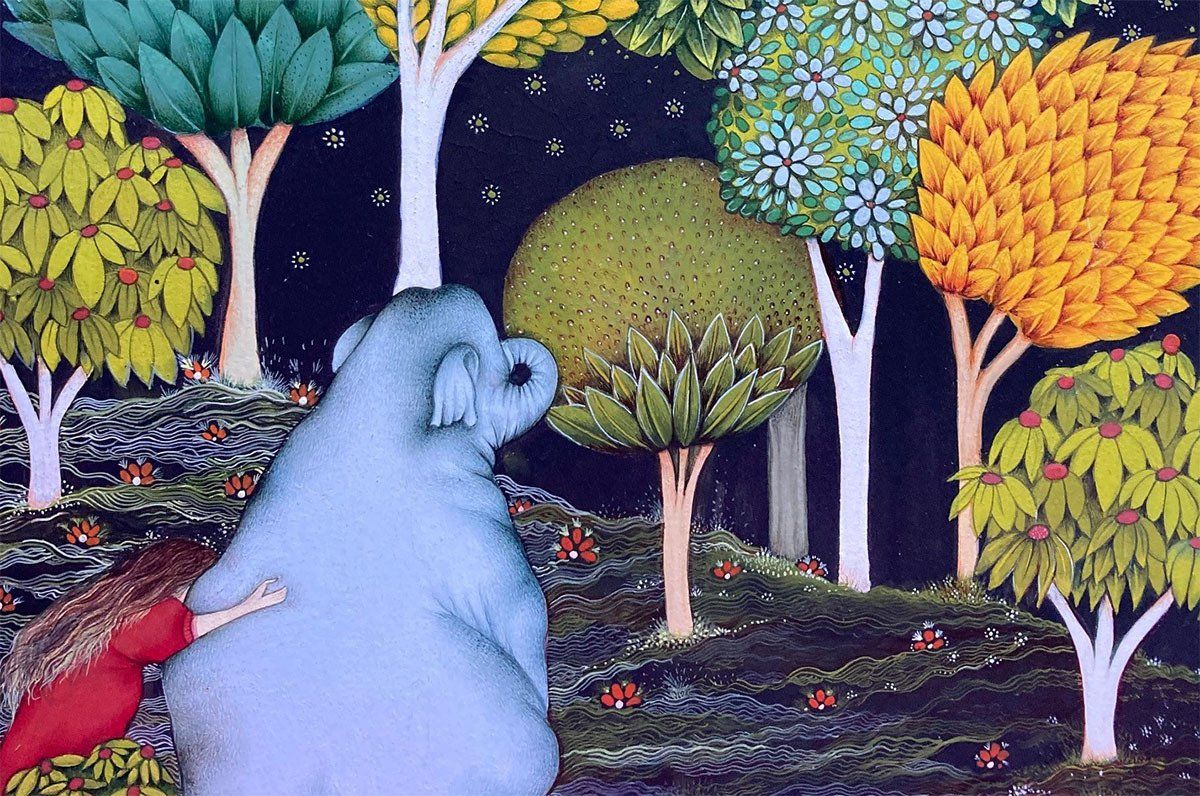LIBRARY ARCHIVE OF LECTURES & PRESENTATIONS
PERSIAN and MUGHAL NARRATIVE PAINTING
STORYTELLING AND THE MASTER PAINTERS
Monday 24th April, 18.00 - 20.00 BST
In the early 16th century Persian narrative painting reached a peak in beauty and visionary sensibility under the inspired patronage of Shah Tahmasp, the second Safavid Shah. Though his period of patronage was relatively short in his long reign, the impact was far-reaching and influential.
From the powerhouse of the ateliers at Tahmasp’s early capital Tabriz, artists, calligraphers, bookbinders and illuminators created magnificent copies of the works of celebrated Persian poets. Under the direction of visionary masters Sultan Muhammad and Bihzad of Herat, a community of exceptional painters rendered the rich imagery of the poetry, complete with layers of metaphor and hidden meaning, into passages of sublime visual narrative, drawing upon an eclectic language of imagery and symbolism that had developed over the preceding centuries. Their influence in the 16th century extended as far as the Ottoman Empire to the West, Central Asia to the East, and the Imperial ateliers of the Mughal Empire of India.
In the first lecture "Storytelling and the Master Painters" we shall look at some famous paintings of the period and examine how they tell their stories from great works of literature, including the epic Book of Kings or Shahname of Firdausi, and the Quintet or Khamseh of Nizami Ganjavi – a treasure house of spiritual wisdom and philosophy in stories of love and war.
SEVEN BEAUTIES, TALES OF MAGIC AND ROMANCE
Friday 28th April 18.00 - 20.00 BST
“Seven Beauties” is the fifth book in the Quintet of Nizami Ganjavi, 12th century mystic poet of Azerbaijan, whose works were perennially popular with rulers of the Medieval world.
“…the most intricate poem of Nizami’s Khamseh… a bedazzling exploration of the pleasures of love. It fascinates as would a piece of jewellery made up of all the precious gems and brilliant metals of the world”*.
In an enchanted phantasmagoria of stories within stories centred on the dashing character of Sassanian King Bahram Gur, the poet weaves a rich visual tapestry with multiple references to the prevailing cosmography, geography, and philosophies of the age.
On each day of the week the king consorts with each of seven princesses from seven different region of the known world, each in her own domed pavilion. The princesses represent the seven heavenly bodies, with their symbolic colours and temperaments, and each one tells a story with a moral about human destiny.
In this lecture we shall enter the magic of miniature paintings illustrating this work in luxury manuscripts of the 15th – 16th centuries, and explore some of the philosophical concepts implied in the language of the artists.
*Quote from Mirror of the Invisible world: Tales from the Khamseh of Nizami,
by Peter J. Chelkowski, Metropolitan Museum of Art publication, 1975.
EMPEROR AKBAR'S EXPERIMENT IN ART
Monday 1st May 18.00 - 20.00 BST
Coming to the Mughal throne in 1556 at the age of 13, Akbar the Great expanded and consolidated an Empire that covered Northern India, Pakistan and parts of Afghanistan. He was also one of the most innovative and passionate patrons of the arts of the book, focusing primarily on narrative painting, and forging a new eclectic style that reflects his endless curiosity and dynamic personality.
Gifted émigrés from the ateliers of Iran had joined the household of Akbar’s father Humayun, bringing with them the accumulated heritage and imagery of Persian manuscript painting. Akbar expanded the library workshops to include Indian painters, who contributed a new energy to the prodigious output of the Mughal atelier. In addition, there was a conscious absorption of European imagery, inspired by gifts of books and prints presented to Akbar by visiting Jesuit delegations from their settlements along the West coast of India.
In this lecture we will consider the formative development of the Mughal School during the reign of Akbar’s father Humayun, and examine its evolution in context under Akbar’s patronage, looking at a series of extraordinary narrative paintings from different periods of Akbar’s reign.
OTHER LECTURE SERIES
Available to commission for public or private lectures.
Subject Areas:
Islamic Art History
Illumination and Arts of the Book
Art & Design in the Indian Subcontinent
Synergies between East and West
Art and Science
To make an inquiry or discuss a project please get in touch:
via the contact page
E-MAIL: amchowdry@gmail.com
mobile phone: +44 (0) 7521 897782







